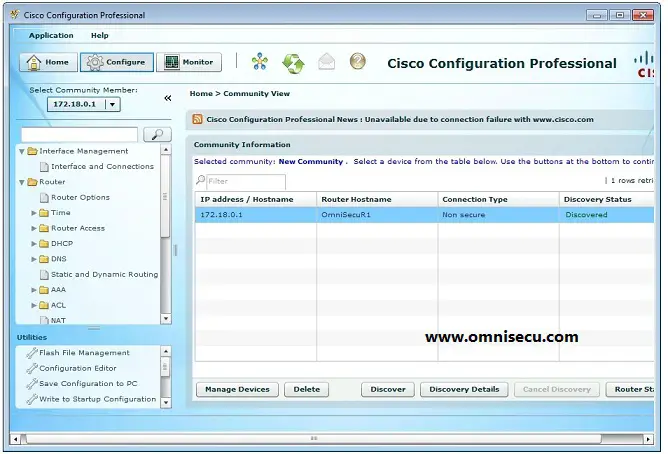How to install Cisco CCP and how to configure Cisco router for CCP
From beginning, Cisco network devices are configured and managed using Cisco IOS CLI (Command Line Interface) by a console connection, telnet or SSH (Secure Shell) connection. Cisco gave network administrators and opportunity to work with GUI (Graphical User Interface) to configure and manage Cisco routers and switches using a product known as SDM (Security Device Manager). CCP (Cisco Configuration Professional) is the latest GUI product to manage Cisco devices and CCP (Cisco Configuration Professional) will eventually replace Cisco Security Device Manager (SDM).
CCP (Cisco Configuration Professional) software includes GUIs, tools and wizards for configuring LAN and WAN interfaces and technologies like Firewall, VPN (Virtual Private Network), Network Address Translation (NAT), IPS (Intrusion Prevention System) etc.
Cisco Configuration Professional supports Secure Shell (SSH)and Secure HTTP (HTTPS) to communicate with the Cisco devices. You can even connect Cisco devices using HTTP instead of HTTPS, if you have slow machines. Remember to use HTTP only in a demo or training session. HTTP traffic is not enmcrypted and someone in your network may capture your network credentials. Use HTTPS only in a real production environment.
Click the following link to know more about CCP (Cisco Configuration Professional). CCP (Cisco Configuration Professional) is available for a trail download in above Cisco webpage. You may require a Cisco id and password to download CCP (Cisco Configuration Professional).
CCP (Cisco Configuration Professional) installation component requirements.
| Component | Requirement |
| Operating System | • Windows 7 (32 or 64 bit) • Windows Vista Business Edition • Windows Vista Ultimate Edition • Windows XP 32 bit (Service Pack 3) |
| RAM | Minimum 1 GB, 2 GB recommended |
| Hard Disk space required | 400 MB |
| Browser | Internet Explorer 6.0 or higher |
| Screen Resolution | 1024x768 |
| Java | JRE 1.6.0_11 to 1.7.0_17 |
| Adobe Flash Player | 10.0 or higher (debug set to no) |
How to install CCP on a Windows Workstation
Step 1: Right click CCP (Cisco Configuration Professional) installation setup file and select "Run as administrator" from the context menu.
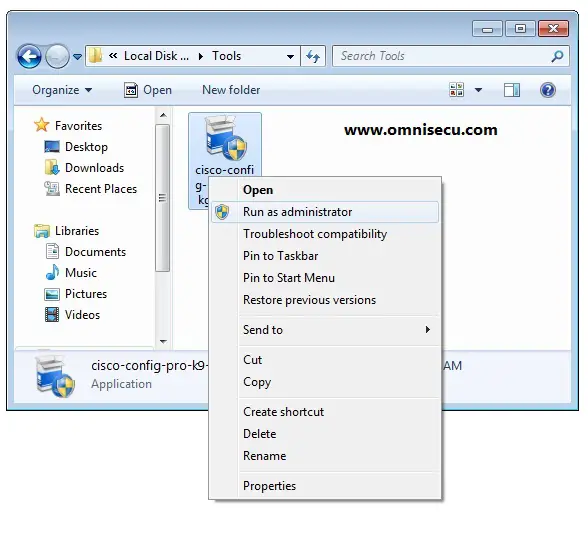
Step 2: In the welcome screen, click "Next".
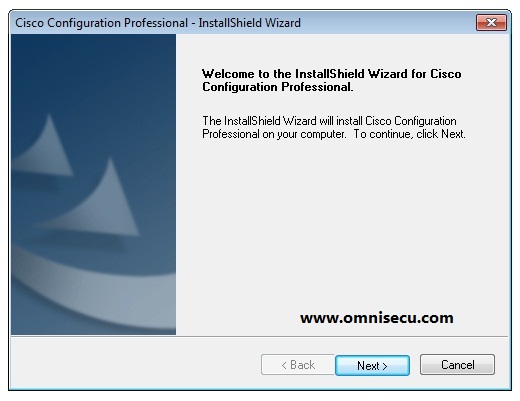
Step 3: Read the Cisco License agreement and check the radio box to agree Cisco License Agreement as shown below, and then click "Next".
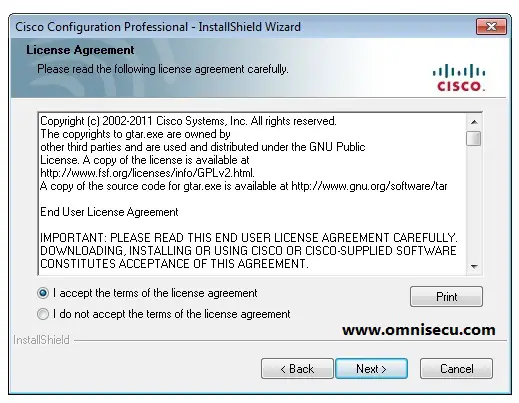
Step 4: Select the CCP installation folder, if you want to change the default installation location. Click "Next" to continue.
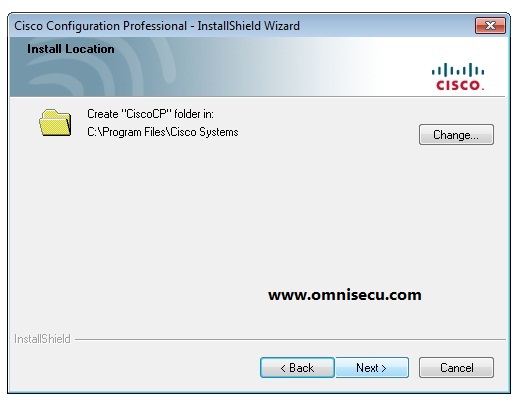
Step 5: Click "Install" button to install the CCP (Cisco Configuration Professional).
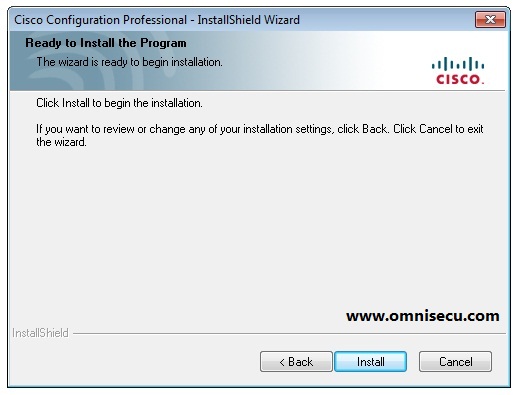
Step 6: If you want to create a desktop icon to launch CCP (Cisco Configuration Professional) from desktop, check "Create shortcut on desktop" and click "Next".
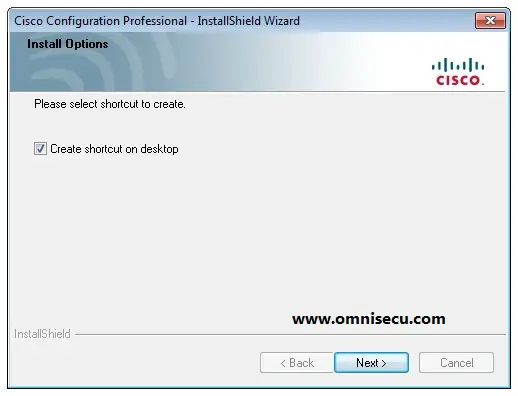
Step 7: Now the seutp will check the CCP (Cisco Configuration Professional) installation requirements and will report any required component is missing. Click "Next" if everything is good.
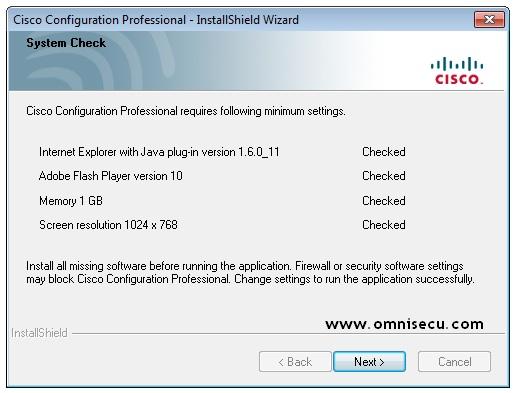
Step 8: Finish the CCP (Cisco Configuration Professional) installation wizard by clicking "Finish". Check "Run Cisco Configuration Professional" if you want to run CCP (Cisco Configuration Professional) immediatly.
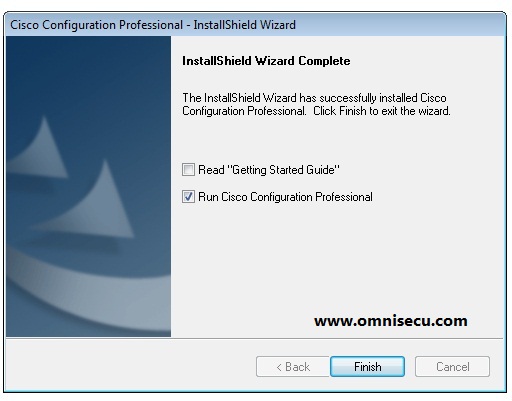
Step 10: CCP (Cisco Configuration Professional) will open in Microsoft Internet Explorer as shown below.
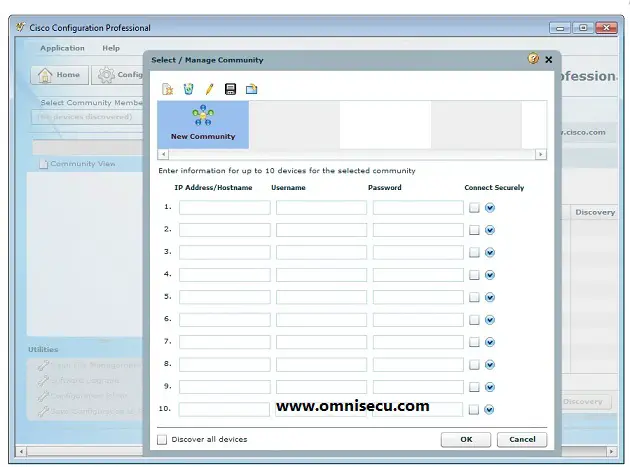
How to configure Cisco Router for CCP (Cisco Configuration Professional)
After installing CCP (Cisco Configuration Professional) in a Windows workstation, we must configure the Cisco routers to be ready for CCP (Cisco Configuration Professional). We have to enable HTTP/HTTPS server on Cisco router and configure a user database for login.
OmniSecuR1#configure terminal OmniSecuR1(config)#username jajish privilege 15 secret OmniSecuPass OmniSecuR1(config)#ip http server OmniSecuR1(config)#ip http secure-server OmniSecuR1(config)#ip http authentication local OmniSecuR1(config)#exit OmniSecuR1#
After enabling HTTP/HTTPS server and configuring a user database on Cisco router, follow these steps for connecting CCP (Cisco Configuration Professional) to router for managing it. The topology of the network is as below.
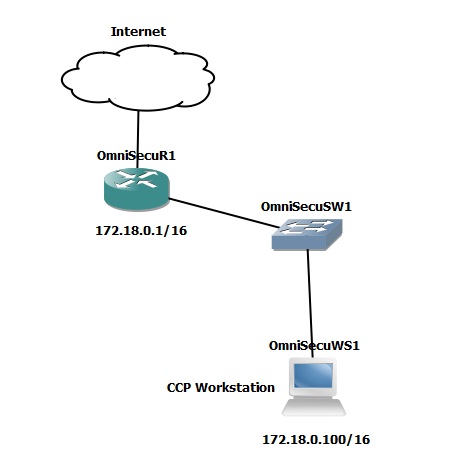
Step 1: Enter the IP address of the Cisco router to be managed (172.18.0.1), user id "jajish" which we had created in the Cisco router and the password for the user "jajish". If you want to connect using HTTPS, instead of HTTP for security reasons, check the "Connect Securely" checkbox. Click "OK"
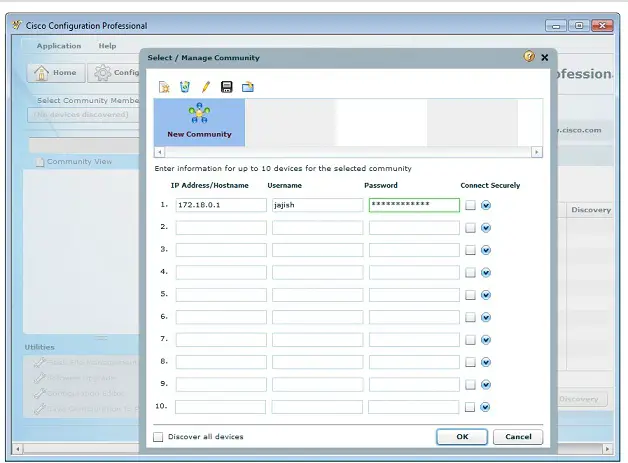
Step 2: After a few seconds, we can see that CCP (Cisco Configuration Professional) has discovered the Cisco Router. You can see the router name and whether is connected by HTTP (Non secure) or HTTPS.
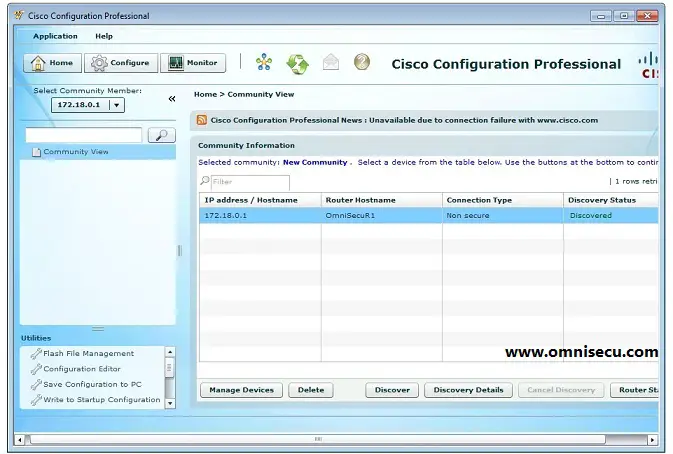
Step 3 : Now you can start configuring your Cisco Router using CCP (Cisco Configuration Professional), by clicking the "Configure" button on top left.
